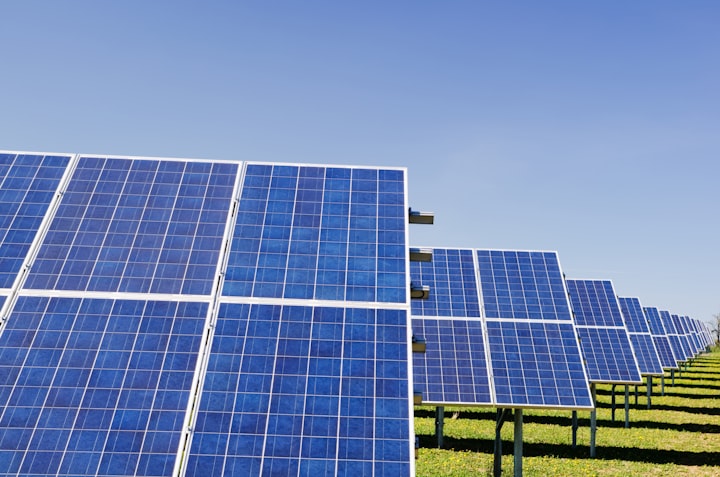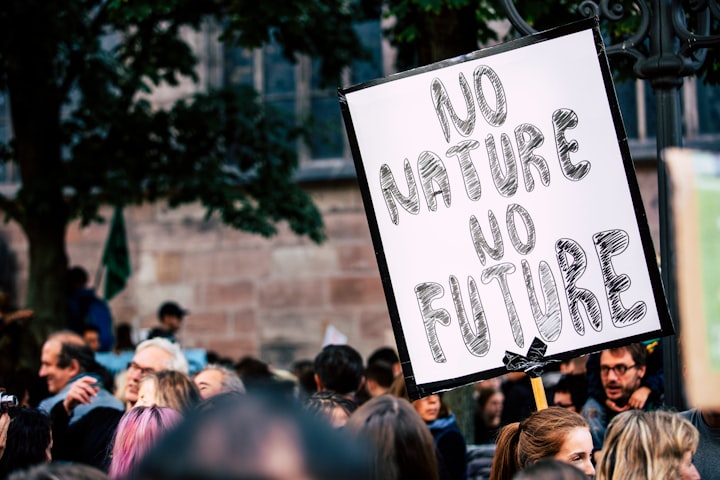
While the prices of electricity and gas are soaring, the issue of energy is coming to the fore. But what energy(s) for a carbon-free world of tomorrow? Green alternatives are on the front line, no offense to their detractors. Ugly landscapes, exorbitant costs... If renewable energies are booming, today wind and solar remain accused of all evils. And they fail to make people forget nuclear power, energy with multiple flaws which also faces the challenge of acceptability. The prospect of an accident forcing residents to leave their homes and the subject of toxic waste for several thousand years does reassure public opinion. But today, the fight against global warming remains the priority, we must decarbonize. At what price? French ambitions are strong: photovoltaic capacity must quadruple over the next seven years, that of onshore wind power must double, and offshore wind power will increase from zero to 10 gigawatts, i.e. the power equivalent of six EPRs. And the atom still has an important role to play.
Warning, hot topic. While the prices of electricity and gas are soaring, the issue of energy is coming to the fore. But what energy(s) for a carbon-free world of tomorrow? Green alternatives are on the front line, no offense to their detractors. Ugly landscapes, exorbitant costs... If renewable energies are booming, today wind and solar remain accused of all evils. And they fail to make people forget nuclear power, energy with multiple flaws which also faces the challenge of acceptability. The prospect of an accident forcing residents to leave their homes and the subject of toxic waste for several thousand years does not reassure public opinion. But today, the fight against global warming remains the priority, we must decarbonize. At what price? French ambitions are strong: photovoltaic capacity must quadruple over the next seven years, that of onshore wind power must double, and offshore wind power will increase from zero to 10 gigawatts, i.e. the power equivalent of six EPRs. And the atom still has an important role to play.
Nuclear and renewable energies: the reign of "at the same time"
As part of the "France 2030" plan for the industries of the future, Emmanuel Macron announced an investment of one billion euros to launch mini-power plants this Tuesday, October 12, 2021. Ten times less powerful than the EPRs, these small nuclear units called SMRs (small modular reactors) can be standardized more easily. Scheduled for 2035, they will supplement the intermittency of renewables and replace polluting thermal power stations. At the same time, the French President shut down the two Fessenheim reactors in perfect working order last year. Within fifteen years, he plans to arrest twelve more. Followers of "at the same time", the head of state also made a plan of 2 billion euros to promote photovoltaic and floating wind power. A "France 2030" plan which therefore gives a boost to renewable energies without denying the atom.
Between reducing CO2 emissions by 55% by 2030 and achieving carbon neutrality by 2050, the European Union has set itself an ambitious roadmap. Housing, industry, transport with the electric car: uses must be electrified. "Electricity represents a quarter of energy consumption in France, says Alexandre Roesch, general delegate of the renewable energies union. In 2050, it will be 50%." A radical change of direction. “All of the commitments for the contracts signed until 2020 range between 153 and 172 billion euros, depending on the market price assumptions, specifies the CRE. And between 46 and 61 billion for those signed within the framework of the multi-annual energy program for 2028." To these amounts must be added several tens of billions of expenses in the networks of RTE and Enedis to accommodate the new means of production.
Presidential 2022: the energy war
Nuclear versus renewables, such remains the new French passion. A cleavage that invites itself into the public debate seven months before the presidential election, against a backdrop of climate concerns and the return of sovereignty.
On the one hand, the supporters of a reinforcement of the French nuclear fleet like Xavier Bertrand, with sovereignists on the left such as Arnaud Montebourg and Fabien Roussel, but also on the right and the far-right, with Nicolas Dupont-Aignan or even Marine Le Pen. All wish to launch the construction of six new EPRs. If some remain open to renewable energies, the whole of this composite block gives priority to nuclear power.
On the other side, the "renewable" pole revolves around two figures from the left, Jean-Luc Mélenchon (La France insoumise) and Yannick Jadot (EELV). Left-wingers advocate phasing out nuclear power in favor of renewable energies. If behind the energy orientations, political calculations are never far away, the supporters of a "third way", like Valérie Pécresse, have more difficulty existing. Eric Zemmour decided in favor of 100% nuclear. It records the reversal of opinion that occurred in the spring of 2021, with 59% of French people now declaring themselves in favor of the atom, according to an Odoxa study.
Wind power unleashes passions. Deterioration of landscapes, soil pollution, damage to biodiversity... In January 2020, Emmanuel Macron already recognized this: "more and more people no longer want to see wind power near their homes". The future park of Saint-Brieuc, which must erect 62 masts about ten kilometers from the coast, in particular, arouses the anger of fishermen. Stéphane Bern, the most famous anti-wind, also believes that "wind energy has nothing ecological (...). It seriously pollutes nature and destroys the natural and built heritage of France". Are wind turbines really counter-productive ecologically, because they destroy biodiversity? "Under the wind turbines located less than a kilometer from the Natura 2000 areas, we observe a mortality of the avifauna [all the birds of a place, editor's note] twice as important as elsewhere, in particular of endangered species, classified on the red lists", underlines Geoffroy Marx, head of the renewable energies and biodiversity program of the LPO. To limit these impacts on biodiversity, the Minister for Ecological Transition Barbara Pompili presented this Wednesday, October 6, 2021, ten measures for "responsible development of wind power".
"States must take up the subject, lead the debate and take charge of the planning of renewables, underlines Patrick Pouyanné. We cannot develop wind and solar power against people." The French state has also recently been condemned for climate inaction. According to the CEO of TotalEnergies, "large groups are not immune to climate lawsuits. The law of the 21st century will be preempted by environmental law." If he wishes to invest 3 billion euros in green energies to appear in the world's Top-5 of renewables in 2030, Patrick Pouyanné believes that the main problem in Europe remains the scarcity of space, and the acceptability of wind projects and solar. He also denounces the 35% increase in demand for liquefied natural gas from Asian markets, which has driven up gas prices.
The emerging sectors of a market of the future
Despite these differences, France is committed to achieving carbon neutrality by 2050. However, wind and solar will not be enough. Faced with this observation, four innovators are developing new technologies in favor of the energy transition.
For three years, Ideol has been testing a 2MW floating wind turbine prototype. On the Sem-Rev experimentation site of Centrale Nantes, 22 kilometers off Le Croisic in Loire-Atlantique, the Floatgen project embodies the first French floating wind turbine. It entered service in September 2018 as part of an experiment with EC Nantes and supplies electricity to the equivalent of a city of 5,000 inhabitants. Today, ten candidates, whose list was unveiled by the Ministry of Ecological Transition on September 15, are in the running to try to win the first call for tenders.
If the deployment of wind farms unleashes passions, another challenge emerges: how to organize their recycling? Their number will explode in the next few years, their lifespan remains short. Between 20 to 25 years old. It is estimated that in France, "300 to 500 wind turbines per year will have to be dismantled between 2025 and 2030", recalls Camille Charpiat, onshore wind manager at the Renewable Energies Union. Innovations aim to achieve 100% recyclable wind turbines, which could boost their acceptability. This is for example the case of Siemens Gamesa which announced at the beginning of September the launch of 100% recyclable blades for offshore wind power.
Hydraulic energy has therefore not said its last word. Off the coast of the Cotentin, a team of engineers also proposes to exploit the energy from the tides. The goal? Produce electricity 100% made in Normandy from 2025. Using the power of the currents, the company HydroQuest wants to include hydraulic energy in the next multi-annual energy program (PPE). It should extend over the period 2024-2033. According to estimates by the ecological transition agency, Ademe, this technology would make a potential source of energy unique in Europe capable of providing up to 3 GW of power per year.





Comments
There are no comments for this story
Be the first to respond and start the conversation.